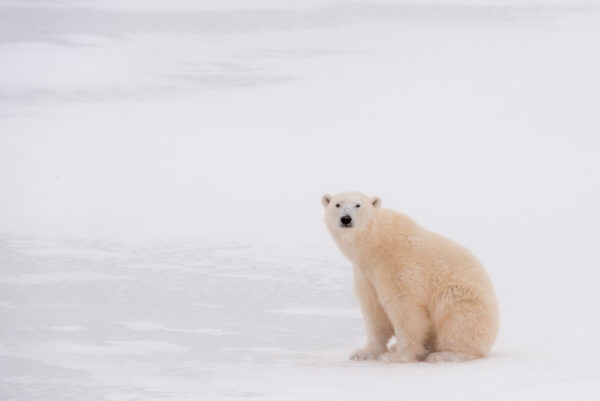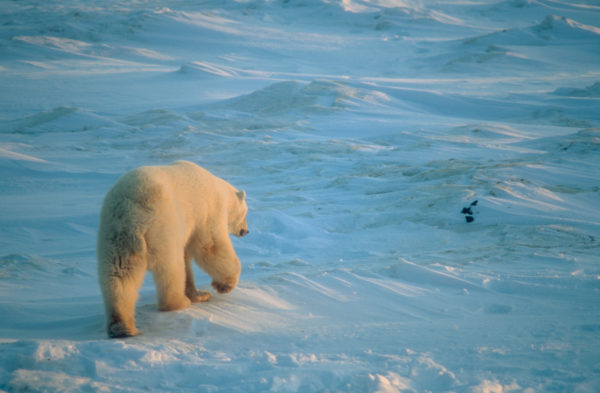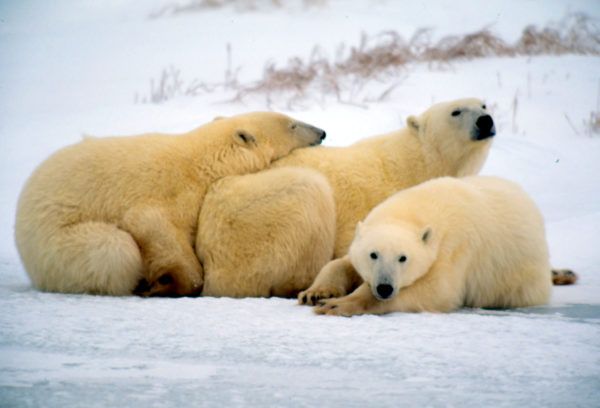Global polar bear conservation results are in. Here’s how Canada's stacks up
Polar bear habitat is disappearing at an astonishing pace as the Arctic rapidly warms and sea ice diminishes, and countries with polar bear populations have a lot of catching up to do in conservation, according to WWF’s new Polar Bear Scorecard, which gauges how well the nations responsible for safeguarding their future are delivering on commitments.

Polar bear (Ursus maritimus) sitting in snow, Churchill, Canada. (c) Elisabeth Kruger
Without urgent action to reduce greenhouse gas emissions, scientists predict one-third of the world’s polar bears will be gone by 2050. With the clock ticking, in 2015 the five polar bear range states – Canada, Denmark/Greenland, Norway, Russia and the United States – developed a 10-year plan to give polar bears the best chance of survival. Two years into The Circumpolar Action Plan for the Conservation of Polar Bears, the range states have completed just five per cent of their goals, and at the current rate they will not meet their 2025 target.
As two-thirds of the world’s polar bears are found in Canada, this country bears a large share of the responsibility for their long-term survival. Here’s how Canada measures up:
Canada gets a good grade for:
- Getting to know our polar bears better by stepping up monitoring and tracking for six of our 13 subpopulations – more than any other country.
- Developing regulations and pioneering new technologies to combat illegal trade of polar bear parts.
- Working with Inuit to better understand the health and subsequent management of polar bears.
Canada needs improvement in:
- Identifying and protecting critical habitats.
- Setting best practices for tourism operators.
- Setting best practices for oil spill response and prevention.
- Allocating funding and resources for population surveys

Polar bear (Ursus maritimus) Churchill area, Manitoba, Canada. (c) Michel Terrettaz
In Canada, polar bears have been without a management plan since they were listed under the federal Species at Risk Act in 2011 – an unacceptable delay as the Act requires a plan be prepared within three years.
Along with rating individual state actions, WWF’s Polar Bear Scorecard looked at how well they worked together as polar bears roam freely across borders. Perhaps not surprisingly, the scorecard found that range states need to work better together as a team. Successful polar bear conservation needs more than five nations working alone, or somewhat together, some of the time.

Rapid climate change – which is destroying the sea-ice habitat on which polar bears depend – demands both co-ordinated international action and bold national moves.
Without it, polar bears’ Arctic home will be lost.

